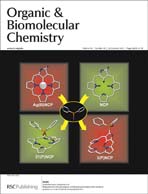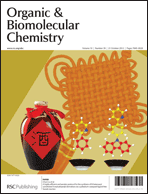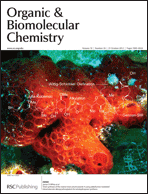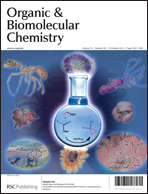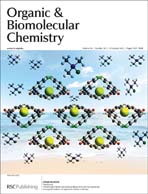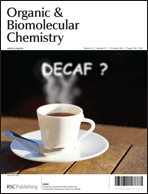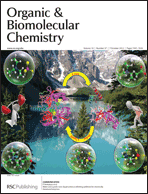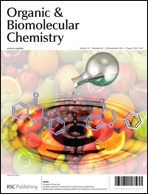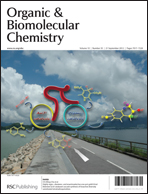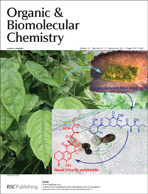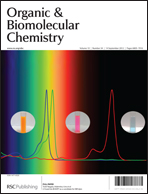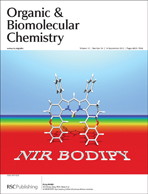OBC issue 41 is now online, and ready for you to browse to your heart’s content. So what have we got for you this week? Well…
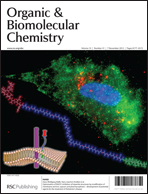 On the front cover:
On the front cover:
A HOT paper by Hans-Wolfgang Klafki, Hans-Joachim Knölker and co-workers, who describe the synthesis of novel tripartite structures and extensive studies on their structure-activity relations in cell-based assays. They report, in detail, the effect of different lipophilic membrane anchors and spacers on the activity of tripartite structures carrying the prototype peptidic pharmacophore GL189.
Optimisation of BACE1 inhibition of tripartite structures by modification of membrane anchors, spacers and pharmacophores – development of potential agents for the treatment of Alzheimer’s disease
Philipp Linning, Ute Haussmann, Isaak Beyer, Sebastian Weidlich, Heinke Schieb, Jens Wiltfang, Hans-Wolfgang Klafki and Hans-Joachim Knölker
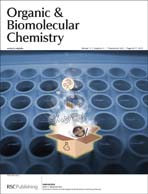 On the inside cover:
On the inside cover:
In this HOT perspective Helen E. Blackwell and colleagues at University of Wisconsin-Madison provide an overview of the use of chemical probes and techniques in quorum sensing research, highlighting throughout how the diversity of chemical techniques can complement biological approaches and ultimately lead to an improved understanding of bacterial quorum sensing.
Chemical methods to interrogate bacterial quorum sensing pathways
Thanit Praneenararat, Andrew G. Palmer and Helen E. Blackwell
As always both cover articles are free to access for the next 6 weeks.
Also in this issue of OBC is a HOT article that featured in Chemistry World recently:
Triterpenoids functionalized at C-2 as diagenetic transformation products of 2,3-dioxygenated triterpenoids from higher plants in buried wood
Gilles Schnell, Philippe Schaeffer, Estelle Motsch and Pierre Adam
For all this and much more, have a look at OBC issue 41 today.













